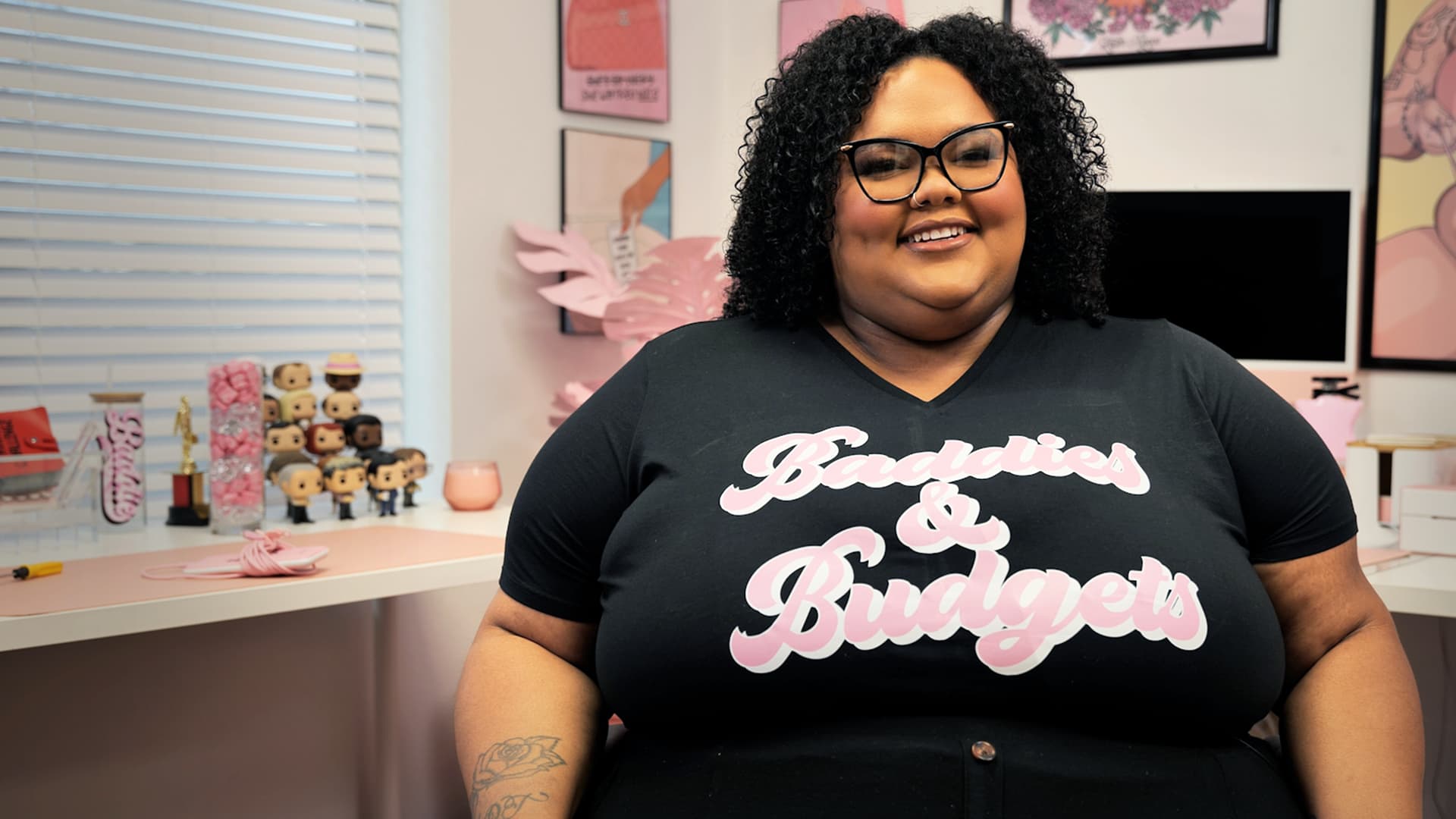If you’ve heard of “cash stuffing,” there’s a good chance it’s because of Jasmine Taylor.
In early 2021, in an effort to get her debt under control and her spending on track, Taylor began using an all-cash budgeting method, divvying up each paycheck into envelopes earmarked for different spending categories. To keep herself accountable, she posted videos of her budgeting journey on TikTok.
At the time, Taylor recalls, the app featured “mostly kids dancing,” but soon she would become an early financial influencer; her account currently has about 672,000 followers.
She has since parlayed her fame into a successful business — Baddies and Budgets — through which she sells money courses, budgeting supplies and other accessories. In 2022, it pulled in about $850,000. This year, it’s on track to clear $1 million.
Even before the business took off, Taylor was reaping financial benefits from her new budgeting method. In the first year of cash stuffing, she paid down $23,000 in student loans and wiped out $9,000 worth of medical and credit card debt.
If you’re looking to rein in your spending and start making progress toward financial goals, Taylor’s preferred budgeting method may be for you. Here’s how it works.
How cash stuffing can change your mindset around money
The cash stuffing method isn’t new. It’s really just a new name for the age-old “envelope method” of budgeting, which predates the use of credit cards. But just because it’s old doesn’t mean it doesn’t work — especially for people who are tempted to overspend using credit.
“Advantages are that it stops building more debt, ensures you spend absolutely no more than you can and it gives money more psychological meaning,” says Christopher Lyman, a certified financial planner at Allied Financial Advisors in Newtown, Pennsylvania.
Swiping for an expense, whether it’s $3 or $50, feels roughly the same, he says. But when you have to count out the money, “you darn well know the difference of three one-dollar bills or two twenties and a ten.”
If you’re disciplined about setting limits for yourself, you’ll be surprised at how quickly your savings can add up, says Amy Jo Lauber, a CFP and founder of Lauber Financial in West Seneca, New York. When she and her husband tried cash budgeting for a year, “we couldn’t believe how much we did not spend. It was astounding,” she says.
How to budget with cash stuffing
Cash stuffing practitioners typically use a zero-based budgeting method, says Taylor. “That means you start your budget with whatever your paycheck number is, and you give every dollar a place to go, down to zero.”
You may want to leave money you’ve earmarked for fixed expenses — such as your rent and utilities — in the bank, says Taylor. Withdrawing those funds “can be confusing and people can overdraft,” she says.
But once you’ve got the rent covered and the heat is on, take the rest of your cash and physically sort it into envelopes marked with different spending categories. Set aside cash for your monthly variable expenses, such as groceries, and stick to the program.
Lauber calls this the “pistachio rule.” Essentially, if you bring $100 to the grocery store and your bag of pistachios, or whatever your pricey guilty pleasure is, puts you over the limit, it has to go back on the shelf.
You’ll also need to allocate a certain amount of cash toward savings. Taylor calls these “sinking funds” — money set aside for short- or long-term goals, such as an emergency fund, car maintenance or gift money for the holidays.
Building up a cash reserve can help keep unforeseen expenses from derailing your plans. Lauber recalls an instance when unexpected damage to her daughter’s school uniform made her exceed her clothing budget for the month. “I ended up having to steal from the pet envelope to cover it,” she says.
Whatever is left over, Taylor says, goes toward the future, either in the form of paying down debt or building up long-term savings.
Of course, dealing entirely in cash comes with a couple of drawbacks. For one thing, “it is inconvenient in a society that is going more and more cashless,” says Lyman. Plus, depending on how much cash you have in your home at a given time, security can be a concern.
“I’ve never been worried about money being stolen or lost in a fire,” says Taylor. “I invested in a fireproof safe pretty early on.”
It was also pretty early on that Taylor began to see the benefits of cash stuffing. It took just a few months for her to save $1,000 — the first time in her life she had access to that much cash at once.
Millions of dollars in business revenue later, she still sees the appeal of cash budgeting. “I love saving challenges and my sinking funds,” she says. “The same stuff that I teach my audience, I still use in my daily life.”
DON’T MISS: Want to be smarter and more successful with your money, work & life? Sign up for our new newsletter!


